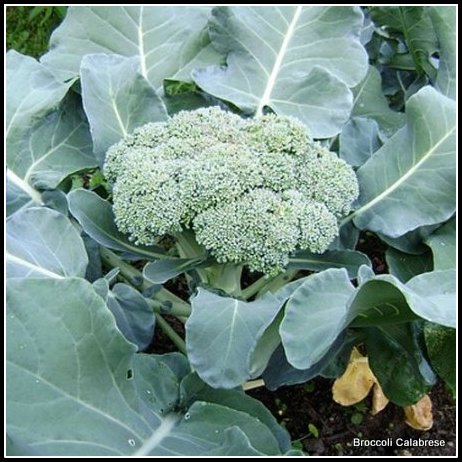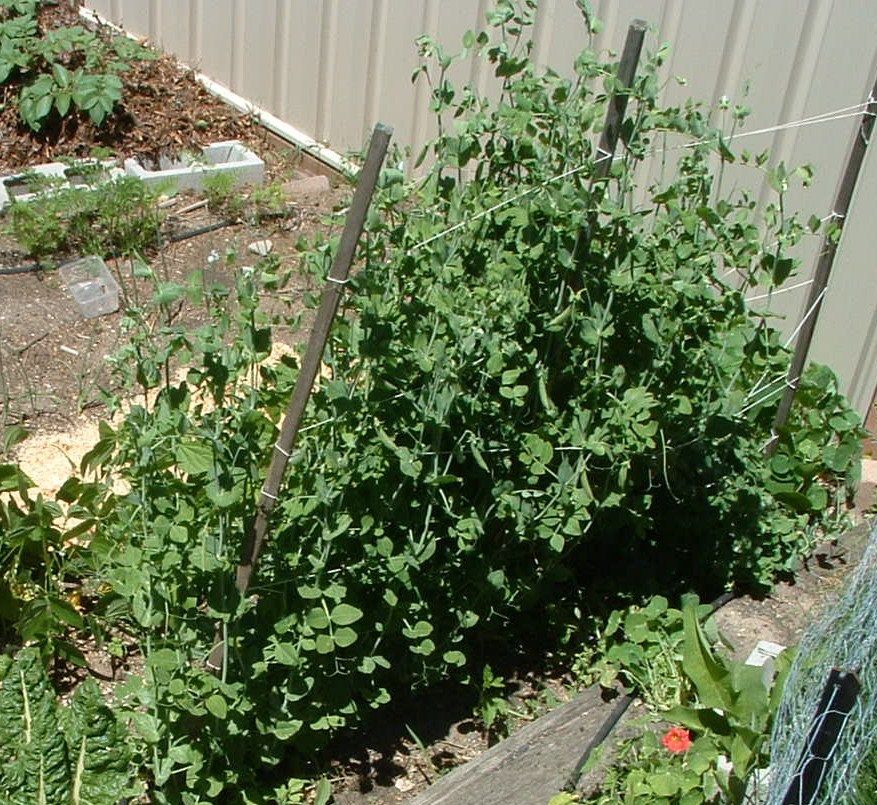
I always think of broccoli as a kind of superior cauliflower, but that could be something to do with childhood memories of English school dinners, where the ‘caulie’ was boiled to death, grey and unappetising. Yeuch.
Talking of boiling, broccoli is a mass of valuable nutrients like glucoraphanin, which the body turns into sulforaphane, a potent anti-carcinogenic compound. About half of this compound is destroyed after just 10 minutes of boiling, and up to three quarters has gone after half an hour. So don’t boil broccoli!
Anyway, it tastes better steamed or stir fried, which leaves the precious glucoraphanin intact, as well as preserving its high Vitamin C content. Microwaving also retains nutrients, or you can eat broccoli raw, maybe with other salad vegetables and a dip.
Most Common Types of Broccoli
The most well known variety of broccoli is Calabrese, named after its native Calabria in Italy. It is an heirloom variety, with a large, green flowering head on an edible stem, surrounded by green leaves. Calabrese is a cool weather crop which is harvested once in late summer in temperate climates, and in the winter in cooler areas, before it produces bright yellow flowers.
The sprouting varieties of broccoli, with many smaller, often purple or white flowering heads are ‘cut and come again’ types, which makes for a more consistent crop. Unlike Calabrese broccoli, this is not just a one off deal – you can harvest the flowering heads throughout the growing season, as the plant continues to produce flowering buds.
As with all types of broccoli, never let the heads develop into flowers, as this produces a loss of taste as well as of nutrients, and the plant will then go to seed.
A Cool Crop
Broccoli does not do too well in a in a tropical or sub-tropical climate and is best grown in cooler conditions, of between 18 to 23 °C (64 to 73 °F). In most of Australia it is a winter vegetable, and seeds can be sewn in the spring. You can also stagger planting over several weeks to ensure a continuous crop of sprouting broccoli.
In more temperate regions, Calabrese varieties mature in early to late summer, from planting earlier in the spring. There are many seed varieties of broccoli, with differing needs and sowing and harvesting times – check on the packets, then away you go!
How to Grow Broccoli
Firstly, prepare the soil. Broccoli likes a PH of 6 – 7.5, and round about 7 is ideal. The more alkaline the soil, the higher the PH value, and adding lime to more acidic soil increases PH. Your garden centre should have a kit so you can test your soil PH levels. It’s a good idea to fertilize your soil about 2 weeks before sowing, then tread it down and rake it over.
Broccoli thrives in rich, nutrient heavy soil. If you want to sow your broccoli seeds directly into the ground, choose a sunny or partly shaded spot which will not become waterlogged. Broccoli likes to be well watered, but needs well draining soil. For the smaller, sprouting varieties this is particularly important as they grow throughout the winter, and broccoli is open to attack by Club Root, a type of fungus that leaves the stems swollen and the leaves yellow.
Sprouting broccoli can be in the ground for around 40 weeks of the year. The soil should be well fertilized, so add organic compost or bone meal – broccoli likes nitrogen so consider adding alfalfa meal or composted poultry droppings.
Sow seeds in rows about half an inch deep (13mm) and six inches (15cms) apart. When they’re about 1” (2.5cms) high, thin the seedlings out, so they’re about 3” (7.5cms) or so apart, to avoid overcrowding of the crop. If they’re not yet in their permanent bed, then when the plants are around 4” (10cms) to 6” (15cms) high, transplant them for further growth. Leave a good 18” (45cms) between plants, and make sure the soil is firm and well fertilized.
Unlike purple and white sprouting varieties, Calabrese broccoli does not like to be transplanted, so always sow seeds or plant seedlings directly in their permanent bed. When harvesting, cut off Calabrese heads at the top of the stalk. For sprouting varieties, cut the stalk about half way down.

Choosing Broccoli Varieties
There are many varieties of broccoli, and all require planting at different times of the year. Always check with your local nursery to see which is best suited to your climate and growing conditions, then follow the advice on the seed packets.
For cool crops, seeds can be sewn directly into the ground in the spring, or you can prepare seedlings in a greenhouse or under a cloche for quicker growth, then plant out your seedlings in late summer.
As broccoli is a member of the brassica family, avoid planting in ground that has housed other brassicas (cabbage, cauliflower, turnip, Brussels sprouts, and kohlrabi) within the last two years, as it can encourage diseases like cabbage root fly and club root that attack brassicas.
Mulch the soil to retain moisture – usually the plants will be ready to harvest within two to four months after planting. To maintain steady growth, cut out side shoots and continue to harvest, and remember to never allow the flower heads to produce flowers.
Common Broccoli Pests and Diseases
Aphids can be dealt with by spraying with a watered down washing up liquid, though don’t spray in direct sunlight.
Pick off caterpillars and kill them.
Mildew, which gives a grey, powdery appearance to the leaves, can be sprayed with a solution of milk mixed with water and washing up liquid. Try it – it really works! A couple of good sprays within days of each other should do the trick.
Prevention is the key with Cabbage Root fly. Avoid planting with other brassicas, and cut out a circle from something tough like carpet or lino, then place it around individual plant stems. The flies cannot then lay their eggs at the base of the plant.
Club root thrives in damp conditions, so do always plant broccoli in well draining soil.


